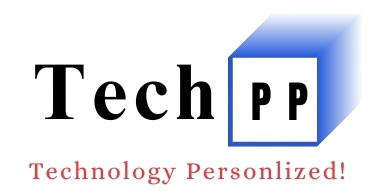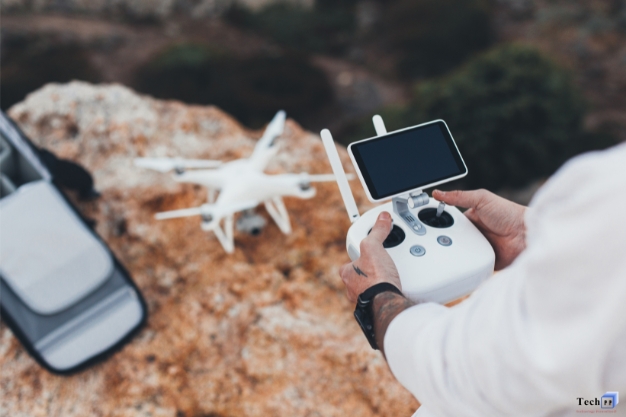Emerging Drone Software! It’s important to stay up to date on the current trends in software development, whether you’re going to start making a new IT product or want to improve an old one. You can give users what they want in software if you learn what they want to see. Ideally, you should accomplish this before your competitors do. And knowing which technologies are becoming more popular will help you pick the ideal tools to make your solutions operate better and get them out faster.
Many tech trends stay the same for years at a time since it takes at least a few years for each new technology to develop and exhibit results. Progressive web apps, low-code development, the blockchain, AR/VR, and microservices are some examples. We choose to write about technologies that look like they will be useful in the near future for this article. We make our choices based on our own market research, attending major tech conferences across the world, talking to clients and partners, and going to tech community events.
The Growing Drone Business
The drone business is going through a big change, and new software is at the heart of it. As drones become more important in fields including agriculture, logistics, infrastructure, and emergency response, the need for smart, scalable, and safe solutions is growing. Drone software development is now focused on building platforms that provide autonomy, real-time analytics, and easy connection with larger enterprise ecosystems. We look at the most important trends that will shape drone software in 2025 and beyond in this article. We show how AI, edge computing, the Internet of Things (IoT), and custom solutions are changing what drones can do for organizations around the world.
Here in this post we are going to discuss in detail about five new technologies that have been getting a lot of attention lately and are likely to become even more prominent in 2025. Software project executives that want to make their solutions more competitive will find this post useful.
How AI and Machine Learning Are Shaping Drone Software in 2025?
Artificial intelligence and machine learning are changing drone software by making drones smarter, more independent, and able to make decisions in real time. In 2025, drones will use AI to quickly analyze huge volumes of sensor data, identify things, and adjust to changes in the environment. These features are very important for things like monitoring wildlife, responding to disasters, and precision farming. Machine learning algorithms look at aerial images to find problems, keep track of assets, and even guess how healthy crops or equipment will be. AI-powered analytics in drone software also make it possible to predict maintenance needs and optimize flight trajectories, which lowers costs and improves mission results for businesses.
The Rise of Autonomous Drone Navigation Systems
Next-generation drone software is starting to include autonomous navigation as a key function. Drones can now execute complicated tasks on their own, thanks to a mix of AI, computer vision, and sensor fusion. These algorithms let drones avoid obstacles, change their courses on the fly, and fly safely in tough places, from busy cities to isolated locales. For businesses like logistics and infrastructure inspection, autonomous navigation cuts down on labor expenses, makes operations more efficient, and lets you deploy 24/7. The trend is making it possible for big, coordinated drone operations and new business models like delivery networks without people.
Why is Edge Computing Revolutionizing Drone Software?
Edge computing is changing drone software by moving data processing closer to where it comes from: on the drone itself. Edge-enabled drones can assess sensor data in real time, make split-second judgments, and respond to changing situations right away, instead of just using cloud servers. This lowers latency, makes things more reliable, and lets mission-critical apps like search and rescue, surveillance, and industrial inspections work. Edge computing also lets drones work well in places where connectivity is weak or only works sometimes. Software solutions find the right mix between speed, scalability, and resource efficiency by splitting up computing duties between the cloud and the drone.
Integration of IoT with Drone Applications
Combining IoT with drone apps is opening up new degrees of automation and connectivity. More and more drones are getting IoT sensors that keep an eye on the weather, keep track of assets, and gather data in real time over large areas. Software systems collect and analyze this data to give industries like agriculture, energy, and logistics useful information that they can use. IoT integration makes it possible for drones, ground stations, and enterprise systems to communicate with one other without any problems. This helps with coordinated operations and remote management. Drones are becoming an important part of smart cities, precision farming, and automated supply chains as IoT networks grow. They help make things more efficient and innovative all across the world.
Predictive Maintenance in UAVs: A Software-Driven Revolution
Advanced software analytics are making predictive maintenance a game-changer for unmanned aerial vehicles (UAVs). Predictive maintenance algorithms can find wear and tear, predict failures, and plan repairs before they happen by constantly checking the parts of a drone and its flight data. This proactive method cuts down on downtime, makes drones last longer, and lowers maintenance expenses. Predictive maintenance keeps operations going and safe for companies that depend on big fleets of drones, such delivery, infrastructure, and surveying. The use of AI-driven predictive maintenance shows how new software is making UAV operations more reliable and less expensive.
Custom Drone Software Solutions for Different Industries
With custom software development services, businesses may make drone software that fits their specific demands. Custom drone solutions can help farmers keep an eye on the condition of their crops, spray them automatically, and anticipate how much they will yield. Drones using special software do 3D mapping, volumetric analysis, and progress tracking in building and mining. Real-time video streaming, infrared imaging, and automated search patterns help emergency services. Custom enterprise software services makes sure that it works perfectly with your current business systems, data workflows, and regulatory needs. As businesses need more specialized skills, the trend toward custom drone software will keep growing in 2025 and beyond.
The Role of AR and VR in Enhancing Drone Interfaces
Augmented reality (AR) and virtual reality (VR) are changing how people interact with drones, making them easier to use and more engaging. AR adds real-time data, flight trajectories, and information about recognizing objects to live video feeds, which helps operators be more aware of what’s going on. With VR, remote pilots can fully experience what the drone sees, which makes training, simulation, and mission planning easier. These technologies are especially useful for complicated tasks like checking infrastructure, responding to disasters, and training pilots. As AR and VR gear becomes easier to get, combining them with drone software will make drone operations safer, more useful, and more interesting.
Cloud Connectivity and Multi-Drone Coordination
Cloud connectivity is a key part of current drone software. It lets you share data in real time, manage your fleet from afar, and grow your fleet. Drones send a lot of pictures and sensor data to the cloud, where it is processed, analyzed, and sent to the people who need it. Multi-drone coordination platforms use cloud infrastructure to make sure that big fleets of drones fly in the same direction, do their jobs, and stay safe. This is important for things like aerial mapping, monitoring farms, and responding to disasters, where coverage and efficiency are very important. Cloud-based solutions also make it easier to follow rules, keep data safe, and connect with enterprise resource planning tools.
Final Thoughts
In 2025, the drone software environment will be full of new ideas and technology that are coming together. AI and machine learning are making drones smarter and able to fly on their own. Edge computing and IoT integration are making it possible for real-time analytics and communication.Predictive maintenance and tailored solutions are making drones more reliable and useful in the industry. AR and VR-powered immersive interfaces are also changing how operators use drones. Cloud-enabled coordination is making it possible for large-scale operations with many drones to happen. As businesses try to get the most out of drones, they will need to invest in custom enterprise software development to stay ahead in a market that is always changing and full of opportunities.


